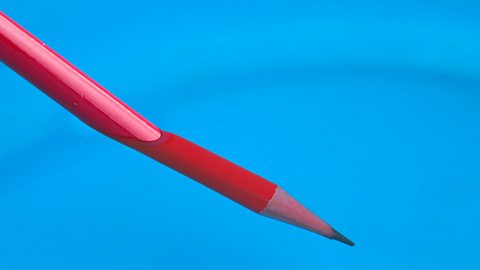Refraction
refractionProcess by which a wave changes speed and sometimes direction upon entering a denser or less dense medium, eg a light ray changes direction when refracted by a lens. is the change in speed of light as it passes from one medium (material) to another. For example, light passing from air (less dense) to glass (more dense); in this case the light slows down. If the light crossed the boundary between the two materials at an oblique angle the light would change direction.
Example: Light rays passing through a glass block
Step 1
Step 2
Step 3
As can be seen in the diagram the light ray changes direction as it enters and leaves the block.
In all ray diagrams, all angles of incidence and refraction are measured between the ray and the normal.
At the boundary between two transparent substances:
- the light slows down going into a denser substance, and the ray changes direction towards the normal
- the light speeds up going into a less dense substance, and the ray changes direction from the normal
Refraction explains why an object appears to bend when it goes through water.
